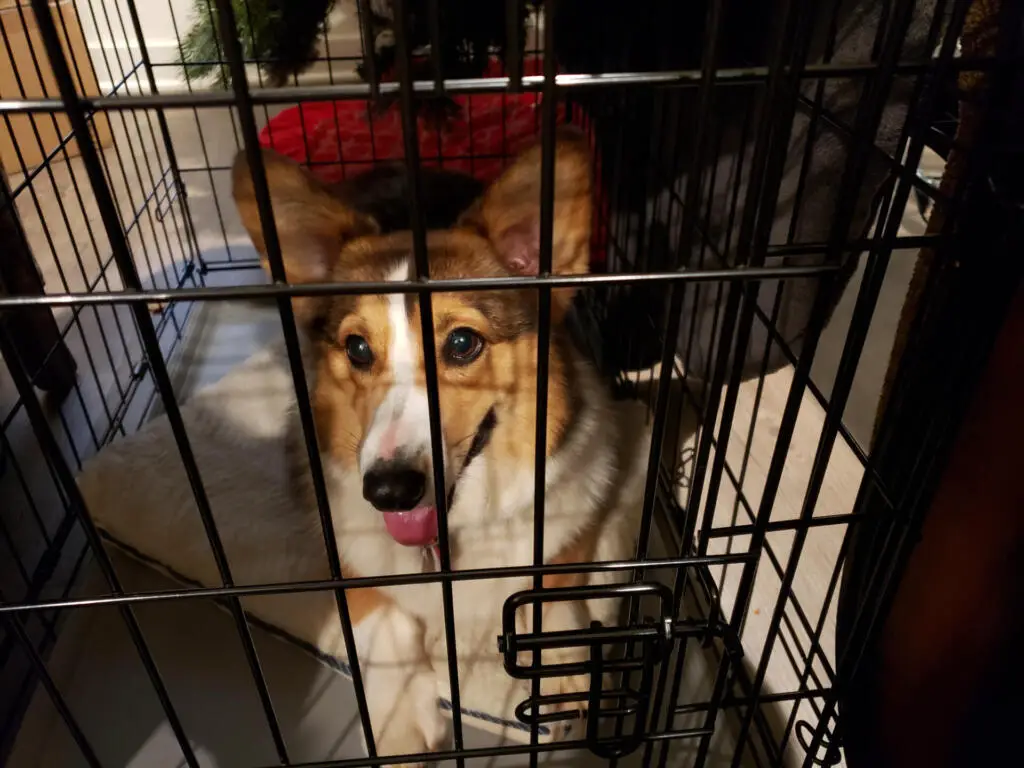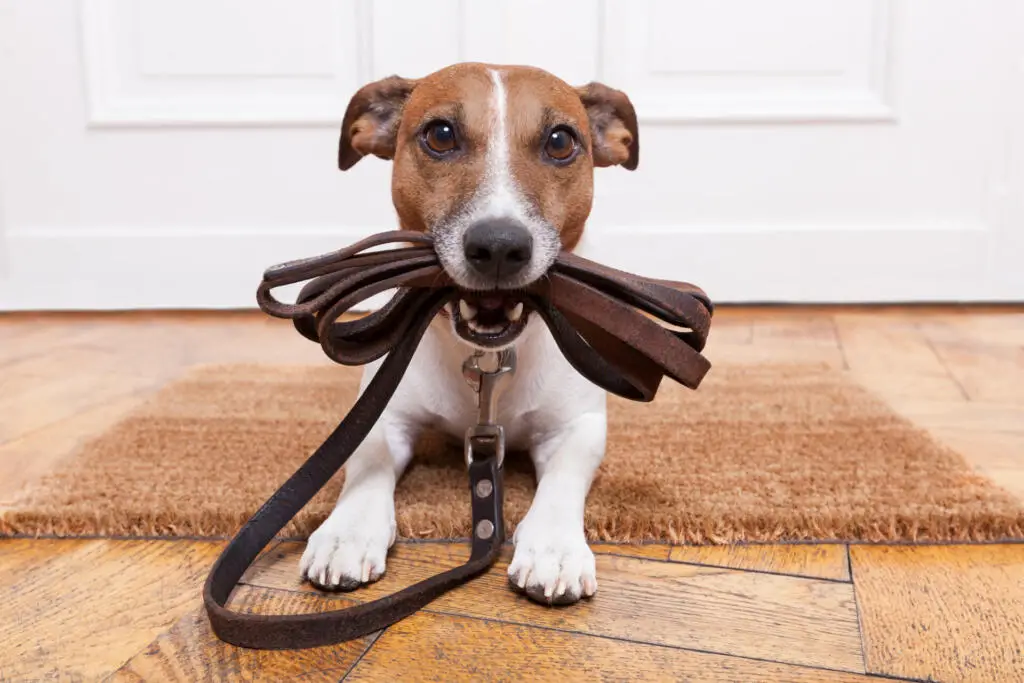Are you thinking of bringing home a new pup, or have you already? Then you’ll want to know the basics of training a dog so you can turn your furry friend into a model citizen. Here are some essential dog training tips, including positive reinforcement techniques, crate training, leash training, and basic obedience commands.
While training a dog feels overwhelming at first – we’ve all been there – it’s simply a matter of building more complex behaviors on top of easier ones over time. Start small with these tips, and by following them, you’ll have a happy and well-behaved pup faster than you thought possible!
Article contents
Utilizing positive reinforcement techniques when training a dog
Dogs want to please their masters. It’s a rare dog that doesn’t enjoy praise and treats, which form the foundations of dog training. These are both types of positive reinforcement, which means rewarding a dog for behavior you want to see again.
However, dogs are instinctually more motivated by food than they are by your happy voice. At first, you should teach all commands using a food-based reward. Bits of kibble, small cubes of cheese, or specialty training treats are all appropriate choices.
Once they know their commands and obey readily in exchange for treats, start using intermittent rewards. That means sometimes you praise and sometimes you offer treats. This actually is more motivating to them, since humans and animals respond more strongly to unpredictable rewards.
Over time, you will move to a mostly praise-based model, where you occasionally give treats when reviewing training at home or on walks.

Crate training tips for beginners
Many dog owners consider crate training a fundamental tool. It not only gives your dog a safe place to be at home and on the road, but it’s an excellent way to begin teaching commands.
Use food as a motivator
Start feeding your dog in their crate as soon as you get them. This will help them form positive associations with their crate, which will dramatically reduce their resistance to getting in it.
You might worry that by feeding your pup in their crate, they won’t want to get in it without the food, but that’s not the case. By making it feel like a safe, warm space that nourishes them, they will go in much more easily, even without food.
Use treats to coax reluctant dogs
Some puppies (and even older adopted dogs) will willingly enter their crate after a week or two of training with meals. However, those who are extra-sensitive or have had traumatic experiences will likely be more suspicious.
You can use treats as a way to coax them in for as long as you need – forever, if necessary. Just make them small so they fit into your animal’s dietary guidelines.
Use the command every time
When you send your dog into their crate, with or without food, use the command to direct them there. The most common commands are “kennel” or “crate.” This reinforces your authority and makes it clear to them what you’re looking for.

Leash training: A step-by-step guide
Everyone needs to walk their dog, and that means a leash! Here are the basics.
Start with wearing the leash around the house
Dogs don’t usually like leashes at first. Clip it to them at home and let them get used to it while playing, eating, or sleeping. This will remove the feeling of threat before you walk outside.
Be consistent in how you Walk
Always walk your dog in the same way. That means holding the leash in the same hand, keeping it the same length, and keeping the dog on the leash side of your body.
Reward good behavior
Don’t let your dog run the walk; you’re in charge. If they walk in front of you, gently direct them back to your place at their side, telling them to “heel.” As soon as they return to the proper form, give them a treat.
Mastering basic obedience commands
Dogs are pack animals, used to a strictly defined pecking order. Believe it or not, displaying firm authority makes dogs feel safe, because they know their place in the world. Work hard on the basic commands and you’ll both be happier.
Start small
The easiest commands are “sit” and “stay.” Teach “sit” by holding a treat over the dog’s head, moving it slowly backward while they track it, until they naturally have to sit to keep watching it. Immediately deliver the treat and praise them.
“Stay” is also simple. Put your dog in a sit, then move slowly backward with your hand held up, palm forward, while saying “stay.” When they move too soon, make a sharp “Ah ah!” sound, and most dogs will stop or sit back down.
“Down” is key
“Down” is a hard command to teach dogs, and it takes many of them longer than other directives. Remember never to force the dog’s body, which not only feels threatening to them, it can cause back and other problems.
Instead, sit down with your knees up. Position your dog to one side of you in a sit, show them the treat, then hold it on the opposite side of your knees, underneath them where they can see it. When they start to go for it, they’ll be forced to go down on their belly to get under your knees. Say “down” as they move through, then wait till they’re fully on the floor before giving it to them.
Hand motions help
Dogs are highly visual. You may want to consider using hand motions that accompany the words. Eventually, you will be able to use these interchangeably with the words.
Make sure at all points to reward, reward, reward. Eventually, that can mean simple praise, but make sure to keep praising your dog for good behavior and they’ll keep wanting to please – for life!
Keep calm and carry on!
Training a dog can be grueling work, especially at first. Losing sleep, cleaning up messes, and finding holes chewed in your rugs are all frustrating – but normal – aspects of new dog ownership. Just keep calm, carry on, and be consistent, and soon enough you’ll have the model pup you want.
